Gonçalo Ramos has started this season very productively, making an impressive impact in Benfica’s Primeira Liga and UEFA Champions League matches.
The young forward joined the club in 2013, having initially started his footballing journey playing with local outfit Olhanense.
Ramos has been tipped for success for a few years now as he has gone up and down from the senior Benfica side to the reserve side, switching between getting first-team experience and continuing his development. However, given that Darwin Núñez left the Portuguese giants this summer to join Liverpool the opportunity for the young Portuguese to establish himself within the first team has now presented itself.
It’s an opportunity that Ramos seems to be grasping with both hands thus far as he has played a pivotal role in Benfica’s fantastic start to life under new manager Roger Schmidt.
With rumours now persisting that a move to the Premier League could be near, it remains to be seen what position Benfica will take with the latest star from their famous academy. Will they look to develop Ramos and hold out for bigger money in future as they did with João Felix and Darwin Núñez? Or will the Premier League offers to prove too enticing for last season’s Champions League quarter-finalists?
In this scout report, we will provide a tactical and statistical analysis which focuses on the key components of Ramos’ game and how they have led to a positive start to his season and made him already a fundamental part of Roger Schmidt’s tactical setup.
Position and Profile
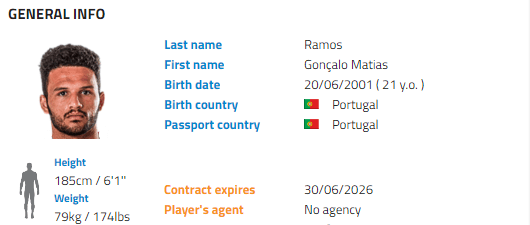
Ramos is a centre-forward who can play in multiple positions across the forward line. This season has seen him play centrally a lot more than the last season, though we’re admittedly still in the very early days of the campaign.
The heat map below shows his average positioning this season. It confirms he likes to move across the attacking line and links up with the play, but his main involvements have been in the penalty area.
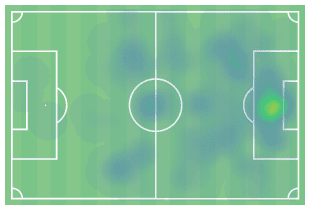
Although the map indicates he is a player who focuses on touching the ball in the penalty area, he has a lot more to his game than just that. He shows good awareness which enables him to drop deeper and help build Benfica’s attacking play and operate as a second striker. He has shown good potential in being able to hold up the ball and act as Benfica’s focal point in attack.
Before this season, when his role within the squad was less significant, he was occasionally deployed out wide on both the right and left side of Benfica’s attacking line. Whilst playing in these areas, he showed good spatial awareness and the ability to exploit space in the opponent’s defensive line.
Data Analysis
This season has started well for Ramos. Benfica have played two Primeira Liga games so far, winning both with Ramos scoring one and assisting one over 151 minutes. In the Champions League, they have reached the playoff round. So far, they have played three matches with Ramos scoring four goals and providing one assist.
The radar chart below indicates the performance that we are seeing from Gonçalo Ramos, at the time of writing. The radar chart gives a percentile ranking for 12 statistics used to measure a forward player’s performance. As you can see Gonçalo Ramos ranks highly in nine of the 12 statistics.
- Receiving long passes
- Shots-per 90
- % Of shots on target
- Goal conversion %
- Touches in the box per 90
- Passing accuracy percentage
- Dribbles per 90
- Dribbling success rate
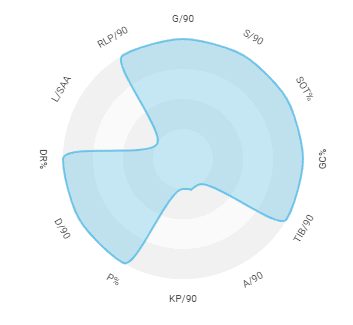
The areas in which he is not performing well are the number of key passes he makes and the number of assists he gets. Given the small number of games played this season, his percentile rank across these statistics will likely change and aren’t too much to hang your hat on just yet, but his performance levels for the start of this campaign have been positive.
Gonçalo Ramos is a young player who is still developing — last season was his first significant contribution in establishing himself as a member of Benfica’s first-team squad. He made 44 appearances in all competitions for Benfica and although 25 appearances were from the substitutes bench, that would have been less if it wasn’t for Darwin Núñez achieving the season he did.
When comparing his performance against the other forwards in Portugal’s Primeira Liga last season, it’s hard to build a solid picture of the level he hit because over 50% of his appearances came from the substitutes’ bench.
When we compiled the data, we focused on forwards in a similar age range (22 and under) who played over 800 minutes last season. The data visualisation below compares the number of shots averaged per 90 minutes against the percentage of shots that hit the target.
As you can see, Ramos fares well when compared with players of similar age. He averages the third number of shots per 90 minutes and averages the third-highest number of shots to hit the target. Overall, he had 2.49 shots per 90 minutes, and he achieved 51.06 % shots on target.
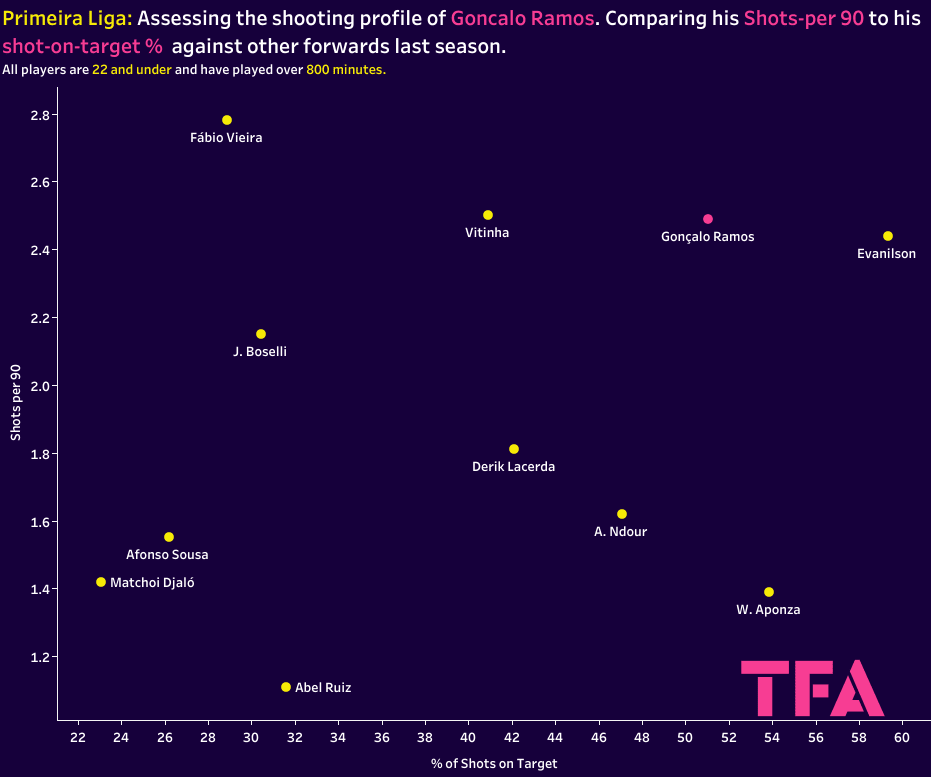
The number of shots per 90 minutes and the percentage of shots that hit the target wouldn’t provide us with a clear indication of a player’s finishing ability without providing data on the quality of the opportunity presented to score with that shot.
The date below compares the number of goals Gonçalo Ramos scored last season with his expected goals. The Portuguese Under 21 international scored seven goals last season and finished the campaign with a 7.29 expected goal rate. This shows he was scoring the chances he should be scoring, and although it’s hard to assess if he would sustain that whilst playing more minutes, this does show he gets in the positions to score a goal and does have the composure to score the goals he should.
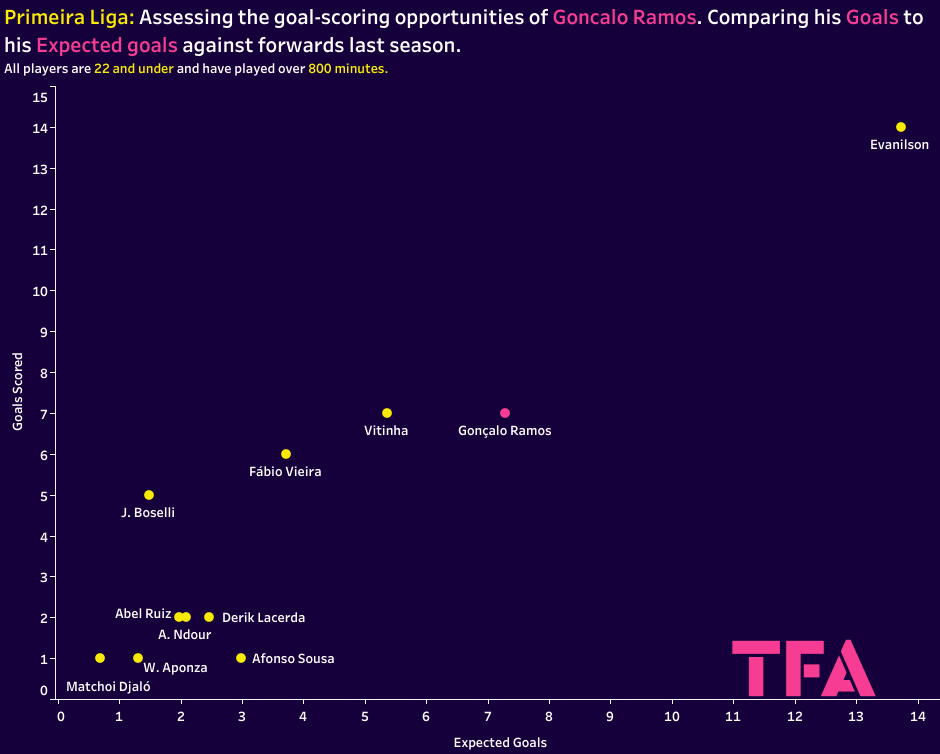
The next data visualisation we compiled was to assess his goals per 90 vs expected goals per 90. Given the inconsistency and uncertainty within appearances and when those appearances are made, it’s difficult to compare players who play at different stages of games. So, calculating a stat as per the 90 minutes they play gives a fairer reflection of how well they perform in that area.
We can see here that Gonçalo Ramos performed above average with the number of goals he scored and was expected to score per 90 minutes. He scored 0.37 goals per 90 minutes, with a 0.39 expected goal rate. We already established in the previous visualisation that there was going to be a small difference between the two stats.
Even though Ramos was fourth for the number of goals scored per 90 minutes played, Vitinha, Fabio Vieira and Boselli all overperformed as their goals per 90 were higher than their expected goals per 90. So, we would predict that Ramos’ goalscoring ability is more sustainable than that of the three players mentioned.
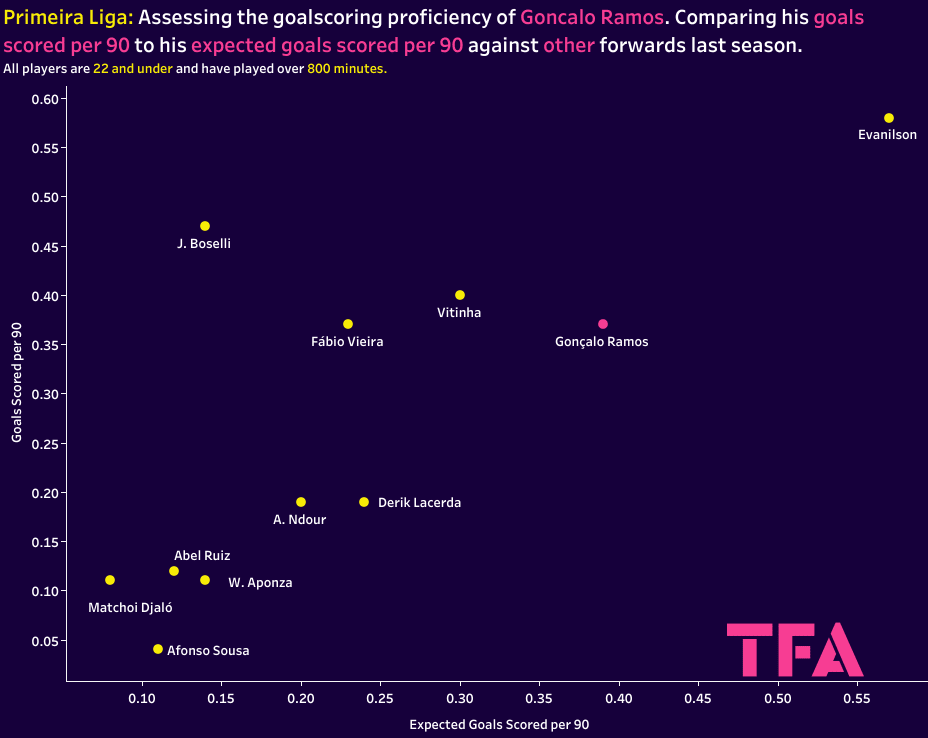
Now that Darwin Núñez has left the club, this season is likely to be the one in which we can assess Gonçalo Ramos’ level and the level he can go on to hit over the coming years.
Defensive Work
Gonçalo Ramos supports his attacking play with a solid defensive work rate. He presses with determination and aggression which fits perfectly into Roger Schmidt’s tactical approach and the style he is currently imposing on Benfica.
As things stand, it looks as though Schmidt will use Ramos through the centre and not out wide. So far this season, he has played as the team’s centre-forward and has been at the forefront of the team’s high press and defensive structure.
From watching Benfica so far this season, it’s Ramos’ Initial press that triggers the team’s press.
As Dynamo Kyiv are playing out from defence, you can see how, initially, Ramos is blocking the central passing lane. When Kyiv’s defender doesn’t open his body with his touch, Ramos immediately looks to press him whilst keeping an adequate cover shadow with the angle of his run to maintain protection of the pitch centrally and force the play out wide.
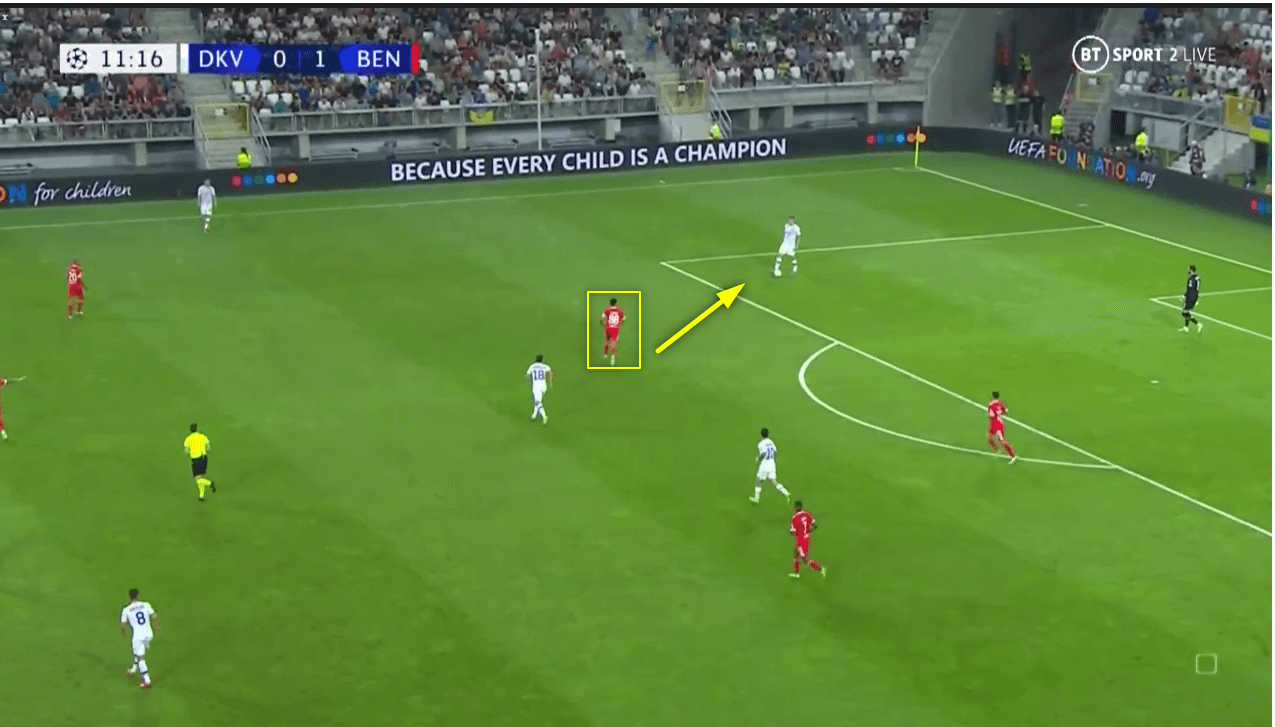
It’s a similar passage of play in the next example. Benfica are applying a high man-orientated pressing system and forcing Kyiv backwards, as Dynamo’s full-back makes that pass back to the goalkeeper, it triggers Ramos to aggressively press the goalkeeper and forces him into kicking the ball long.
This takes Dynamo away from how they want to play and also allows Benfica to win back possession.
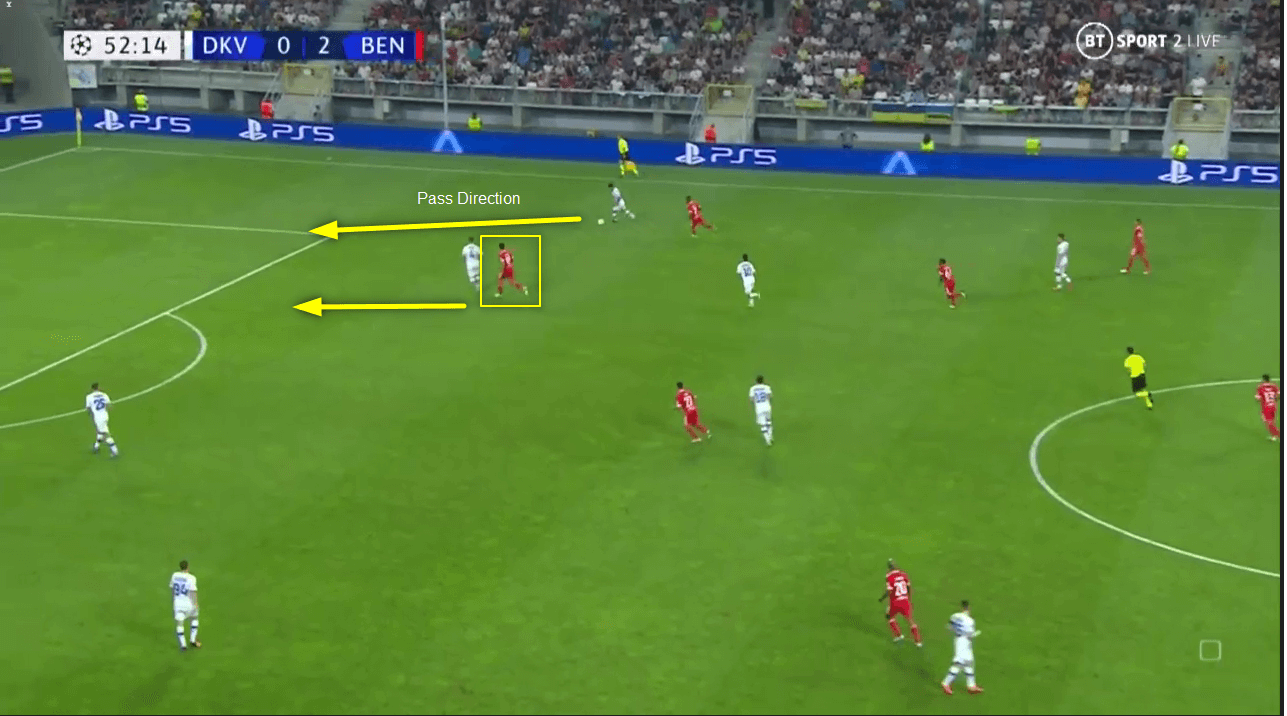
Attacking Movement
When he was breaking through into the first team from Benfica’s B team, it was Ramos’s movement in the attacking third that allowed previous managers to use him as one of the wide players in the attacking line. His ability to attack space and create further space both inside and outside the penalty area with his movement is what made the move to the centre a more natural progression.
Ramos is good at picking up positions between the opposition’s defenders and then exploiting space behind the defensive line. For example, here, as João Mário receives the ball, Ramos immediately looks to attack the space behind Midtjylland’s defence.
Given the angle of the run and the area he is attacking, there is nothing Midtjylland can do to prevent a goal threat, as it creates more space in the centre. Benfica scored with this attack.
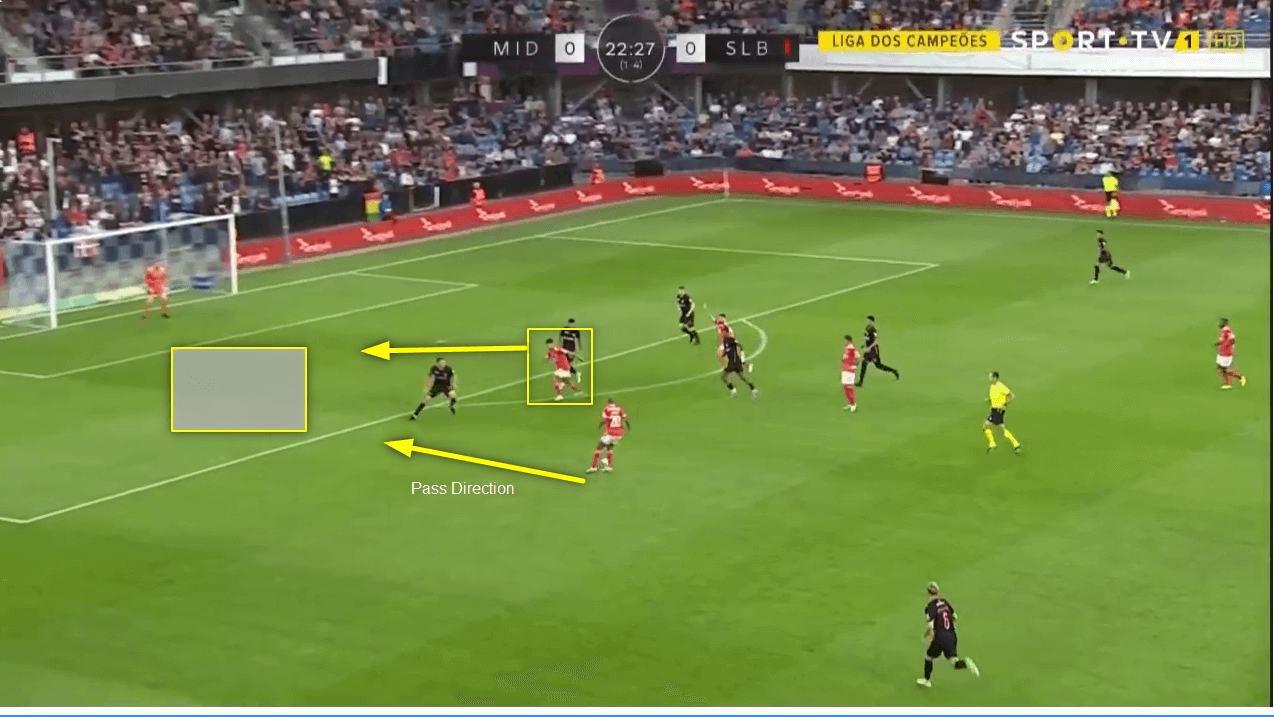
This shows two elements of his movement, as he drops deep to link up play with the midfield. However, as he plays the one-two with João Mário, he curves his run and pulls out wide into the left-hand channel.
Curving his run creates space between him and the Dynamo Kyiv full-back for a pass to be made, and by running out wide, he pulls each defender apart, creating more space across the attacking third and potentially causing further disruption with Dynamo Kyiv’s defence.
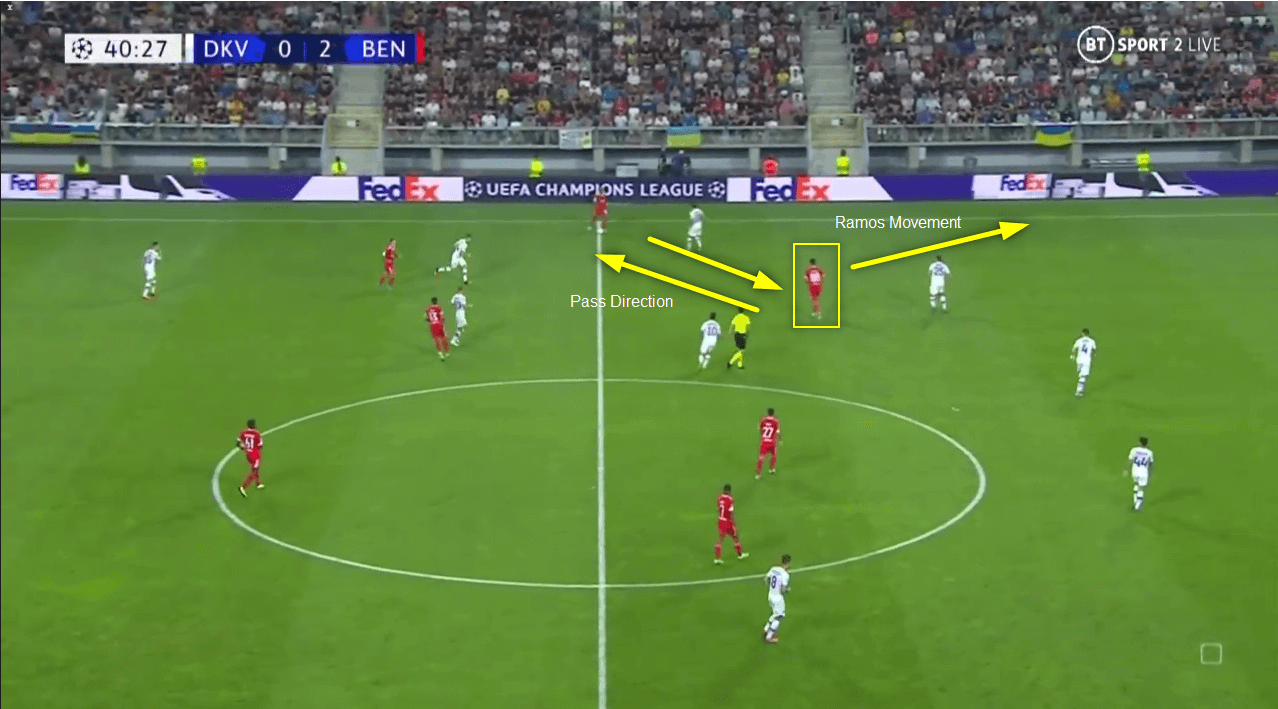
Conclusion
This analysis has focused on Gonçalo Ramos’ development at Benfica. He has also achieved success coming through the ranks of the national team — being capped at Under 17, 19 and 21 levels. He was the top scorer in the Under 19 European Championships in 2019 and was part of the Under 21 squad that finished as runners-up.
A move to the Premier League or Bundesliga has been speculated on, with Wolves, Newcastle, and Everton, along with Bayern Munich all rumoured to have taken an interest in the attacker.
However, it is not the right time for Gonçalo Ramos to be moving on, for us, as it’s still very early in his career. With Darwin Núñez having already departed and Ramos starting the season as the focal point within Roger Schmidt’s tactics, the experience of playing an important role within this Benfica side will be crucial to the next stage of the player’s development.
With Champions League football looking likely at the Estádio do Sport Lisboa, then he will get to test himself in the environment against higher-quality opposition throughout the season.
In this scout report, we provided data analysis and tactical analysis to identify the key components of Gonçalo Ramos’ game last season and so far, this season. We have shown the strong tactics within his attacking play, along with other aspects that contribute to his overall performance.

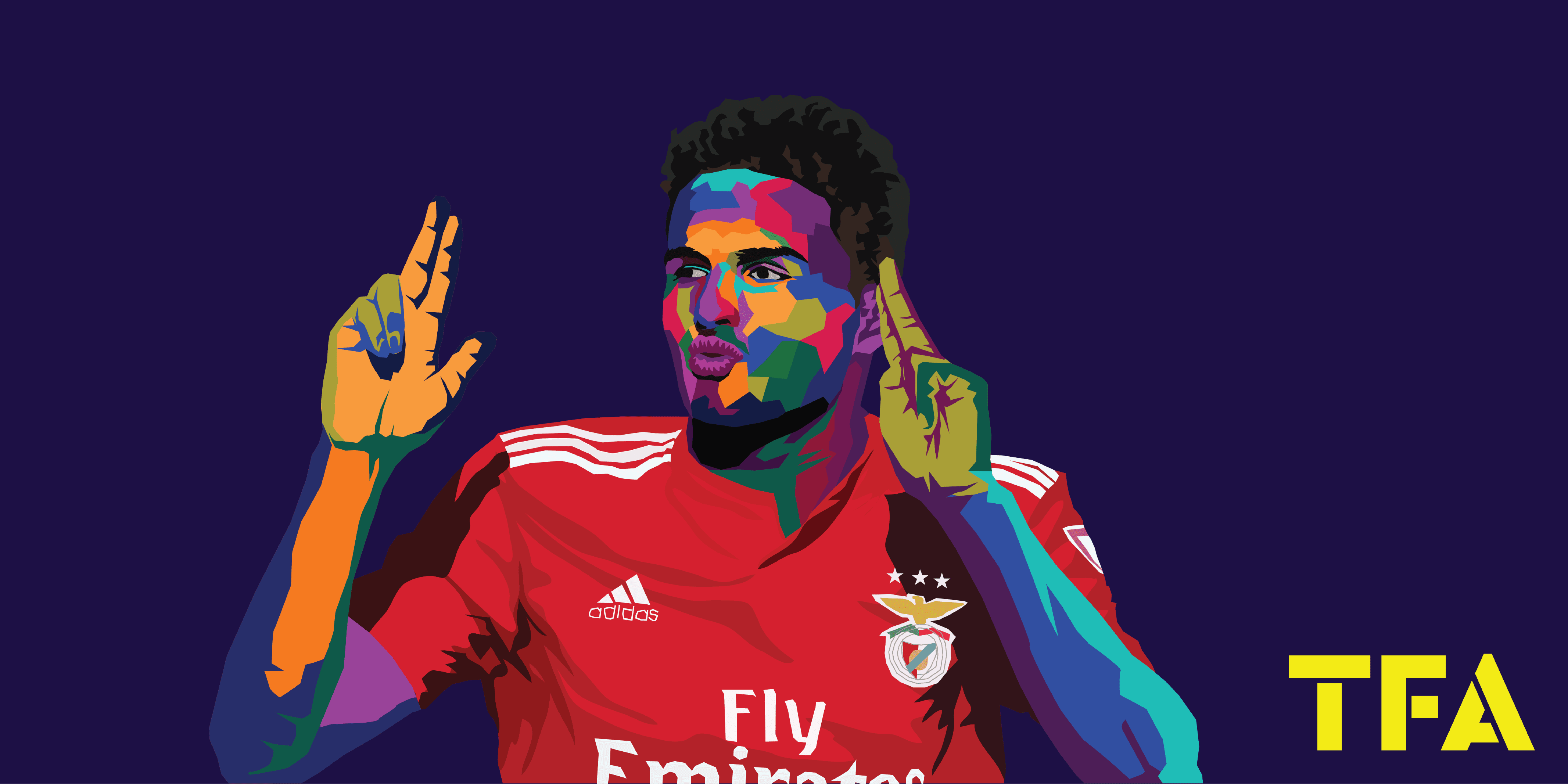




Comments